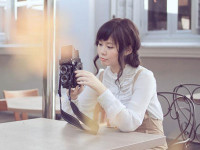M. DE VILLEFORT
来源:互联网 发布:VueJS循环数组 编辑:程序博客网 时间:2024/05/08 12:16
<!-- /* Font Definitions */ @font-face{font-family:宋体;panose-1:2 1 6 0 3 1 1 1 1 1;mso-font-alt:SimSun;mso-font-charset:134;mso-generic-font-family:auto;mso-font-pitch:variable;mso-font-signature:3 135135232 16 0 262145 0;}@font-face{font-family:"/@宋体";panose-1:2 1 6 0 3 1 1 1 1 1;mso-font-charset:134;mso-generic-font-family:auto;mso-font-pitch:variable;mso-font-signature:3 135135232 16 0 262145 0;} /* Style Definitions */ p.MsoNormal, li.MsoNormal, div.MsoNormal{mso-style-parent:"";margin:0cm;margin-bottom:.0001pt;text-align:justify;text-justify:inter-ideograph;mso-pagination:none;font-size:10.5pt;mso-bidi-font-size:12.0pt;font-family:"Times New Roman";mso-fareast-font-family:宋体;mso-font-kerning:1.0pt;} /* Page Definitions */ @page{mso-page-border-surround-header:no;mso-page-border-surround-footer:no;}@page Section1{size:612.0pt 792.0pt;margin:72.0pt 90.0pt 72.0pt 90.0pt;mso-header-margin:36.0pt;mso-footer-margin:36.0pt;mso-paper-source:0;}div.Section1{page:Section1;}-->M. DE VILLEFORT kept the promise he had made to Madame Danglars, toendeavor to find out how the Count of Monte Cristo had discovered the historyof the house at Auteuil. He wrote the same day for the required information toM. de Boville, who, from having been an inspector of prisons, was promoted to ahigh office in the police; and the latter begged for two days time to ascertainexactly who would be most likely to give him full particulars. At the end ofthe second day M. de Villefort received the following note:-- "The personcalled the Count of Monte Cristo is an intimate acquaintance of Lord Wilmore, arich foreigner, who is sometimes seen in Paris and who is there at this moment;he is also known to the Abbé Busoni, a Sicilian priest, of high repute in theEast, where he has done much good." M. de Villefort replied by orderingthe strictest inquiries to be made respecting these two persons; his orderswere executed, and the following evening he received these details:-- "Theabbé, who was in Paris only for a month, inhabited a small two-storied housebehind Saint-Sulpice; there were two rooms on each floor and he was the onlytenant. The two lower rooms consisted of a dining-room, with a table, chairs,and side-board of walnut,--and a wainscoted parlor, without ornaments, carpet,or timepiece. It was evident that the abbé limited himself to objects of strictnecessity. He preferred to use the sitting-room upstairs, which was morelibrary than parlor, and was furnished with theological books and parchments, inwhich he delighted to bury himself for months at a time, according to his valetde chambre. His valet looked at the visitors through a sort of wicket; and iftheir faces were unknown to him or displeased him, he replied that the abbé wasnot in Paris, an answer which satisfied most persons, because the abbé wasknown to be a great traveller. Besides, whether at home or not, whether inParis or Cairo, the abbé always left something to give away, which the valetdistributed through this wicket in his master's name. The other room near thelibrary was a bedroom. A bed without curtains, four arm-chairs, and a couch,covered with yellow Utrecht velvet, composed, with a prie-Dieu, all itsfurniture. Lord Wilmore resided in Rue Fontaine-Saint-George. He was one ofthose English tourists who consume a large fortune in travelling. He hired theapartment in which he lived furnished, passed only a few hours in the daythere, and rarely slept there. One of his peculiarities was never to speak aword of French, which he however wrote with great facility." The day afterthis important information had been given to the king's attorney, a manalighted from a carriage at the corner of the Rue Férou, and rapping at anolive-green door, asked if the Abbé Busoni were within. "No, he went outearly this morning," replied the valet. "I might not always becontent with that answer," replied the visitor, "for I come from oneto whom everyone must be at home. But have the kindness to give the AbbéBusoni"-- "I told you he was not at home," repeated the valet."Then on his return give him that card and this sealed paper. Will he beat home at eight o'clock this evening?" "Doubtless, unless he is atwork, which is the same as if he were out." "I will come again atthat time," replied the visitor, who then retired. At the appointed hourthe same man returned in the same carriage, which, instead of stopping thistime at the end of the Rue Férou, drove up to the green door. He knocked, andit opened immediately to admit him. From the signs of respect the valet paidhim, he saw that his note had produced a good effect. "Is the abbé athome?" asked he. "Yes; he is at work in his library, but he expectsyou, sir," replied the valet. The stranger ascended a rough staircase, andbefore a table, illumined by a lamp whose light was concentrated by a largeshade while the rest of the apartment was in partial darkness, he perceived theabbé in a monk's dress, with a cowl on his head such as was used by learned menof the Middle Ages. "Have I the honor of addressing the Abbé Busoni?"asked the visitor. "Yes, sir," replied the abbé; "and you arethe person whom M. de Boville, formerly an inspector of prisons, sends to mefrom the prefect of police?" "Exactly, sir." "One of theagents appointed to secure the safety of Paris?" "Yes,sir"" replied the stranger with a slight hesitation, and blushing. Theabbé replaced the large spectacles, which covered not only his eyes but histemples, and sitting down motioned to his visitor to do the same. "I am atyour service, sir," said the abbé, with a marked Italian accent.
- M. DE VILLEFORT
- de
- de
- zapatillas nike Sensación de la música UNVEILED 23 DE CHINA JEANSWEST COPA DE SITIO DISEÑO DE DESGAS
- y las preocupaciones de M sobre la independencia de su unidad se ha ido para siempre. Bond
- 概率学的创立:Chevalier de Méré问题
- shei you m,o shou di tu de xiu gai qi
- Conoce los métodos más efectivos en la rama de la dietética: Grado Superior Dietética
- wo de
- wo de
- haohao de
- wo de
- 6644de
- 空de
- M
- m
- m,
- m
- GetDlgItem()函数作用
- PHP的三点精华介绍
- 35岁前程序员要规划好的四件事
- PHP加密解密内部算法
- 接漏PHP的ip2long有bug,请慎用
- M. DE VILLEFORT
- Tomcat 5.0.xx /WEB-INF 目录使用说明
- fdisk
- XBuilder:Ext表单设计的完美实现
- CFileDialog不能设置默认路径问题
- 使用 JSON 进行数据传输
- TCP
- 将阻塞模式的socket连结变为非阻塞模式
- MSSQL日期推算处理


